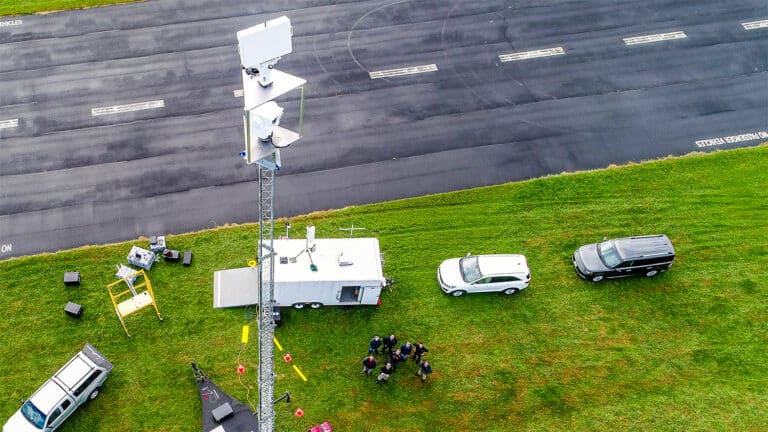UK Drone Wars: Hunters and Saboteurs Clash in High-Tech Aerial Conflict

The long-standing battle between fox hunters and animal rights activists in the UK has escalated to the skies, with both sides deploying sophisticated drones in an increasingly high-tech conflict. A recent report from The Telegraph confirms that hunt saboteur groups are now widely using unmanned aerial vehicles (UAVs) to monitor hunts and gather evidence of illegal activity, while hunting groups have begun using their own drones in aggressive countermeasures, leading to aerial dogfights over the British countryside.
For drone professionals and enthusiasts, this escalating conflict highlights a novel, if contentious, real-world application of UAV technology. It showcases drones being used for surveillance, counter-surveillance, and even direct aerial engagement, pushing the boundaries of civilian drone use and raising complex legal and ethical questions for regulators and operators alike.
The Technology of the Conflict
The drones being used are far from simple consumer toys. Hunt saboteur groups are investing in advanced equipment to gain an edge. According to the source material, some groups are using devices costing up to £2,500 (approximately $3,100 USD) equipped with high-definition cameras and capable of speeds approaching 50 mph (80 km/h). To operate these more advanced systems, members are reportedly undergoing training to meet Civil Aviation Authority (CAA) standards.
Fundraising efforts are ongoing to acquire even more capable technology. One group is seeking over £1,000 ($1,240 USD) for a drone with superior zoom lenses and extended battery life, intended to “cover many miles to keep up with hunts.” This indicates a clear strategy to use drones for long-range reconnaissance and evidence gathering in remote rural areas.
In response, hunting groups have started to deploy their own drones. In one documented incident, a hunt’s drone was allegedly equipped with a weighted line in an attempt to physically ensnare and down a saboteur’s UAV. This tactic, as reported by The Independent, resulted in both drones crashing, demonstrating a dangerous new phase of direct aerial confrontation.
Rules of Engagement and Legal Gray Areas
The use of drones in this manner operates in a complex legal landscape. Both sides have accused each other of flouting CAA regulations. A spokesperson for the British Hound Sports Association stated that “Anti-hunt extremists misuse drones in ways that are unsafe, flying close to horses, hounds and followers or operating out of sight and without permission.”
Conversely, a Hunt Saboteurs Association spokesperson claims that hunts are “developing new methods to prevent their pastimes becoming public and have started attacking both drones and their pilots.”
The CAA has made it clear that flying a drone dangerously or illegally can lead to criminal prosecution, and endangering an aircraft carries a potential prison sentence of up to five years. Furthermore, specific laws protect wildlife from harassment. The UK’s National Wildlife Crime Unit has warned that disturbing protected species with a drone can result in fines up to £5,000 ($6,200 USD) and six months in prison. As these aerial battles unfold directly over areas where animals are present, operators on both sides are navigating significant legal risks.
DroneXL’s Take
The escalating drone war in the British countryside is a fascinating, if troubling, case study in the dual-use nature of UAV technology. While one side leverages drones for what it calls citizen journalism and law enforcement oversight, the other is adopting counter-UAV tactics that have, until now, been largely confined to military or security contexts. This conflict is a microcosm of the broader challenges facing the drone industry: regulation, public perception, and the unforeseen applications of technology.
It raises critical questions for the drone community. Where is the line between surveillance and harassment? What responsibility do manufacturers have when their products are used in direct conflict? And how can regulators like the CAA effectively police these fast-moving, low-altitude confrontations in remote areas? As these groups continue to innovate their tactics, the answers will shape the future of civilian drone operations. We invite you to share your thoughts in the comments below.
Discover more from DroneXL.co
Subscribe to get the latest posts sent to your email.
Check out our Classic Line of T-Shirts, Polos, Hoodies and more in our new store today!

MAKE YOUR VOICE HEARD
Proposed legislation threatens your ability to use drones for fun, work, and safety. The Drone Advocacy Alliance is fighting to ensure your voice is heard in these critical policy discussions.Join us and tell your elected officials to protect your right to fly.
Get your Part 107 Certificate
Pass the Part 107 test and take to the skies with the Pilot Institute. We have helped thousands of people become airplane and commercial drone pilots. Our courses are designed by industry experts to help you pass FAA tests and achieve your dreams.

Copyright © DroneXL.co 2025. All rights reserved. The content, images, and intellectual property on this website are protected by copyright law. Reproduction or distribution of any material without prior written permission from DroneXL.co is strictly prohibited. For permissions and inquiries, please contact us first. DroneXL.co is a proud partner of the Drone Advocacy Alliance. Be sure to check out DroneXL's sister site, EVXL.co, for all the latest news on electric vehicles.
FTC: DroneXL.co is an Amazon Associate and uses affiliate links that can generate income from qualifying purchases. We do not sell, share, rent out, or spam your email.


















